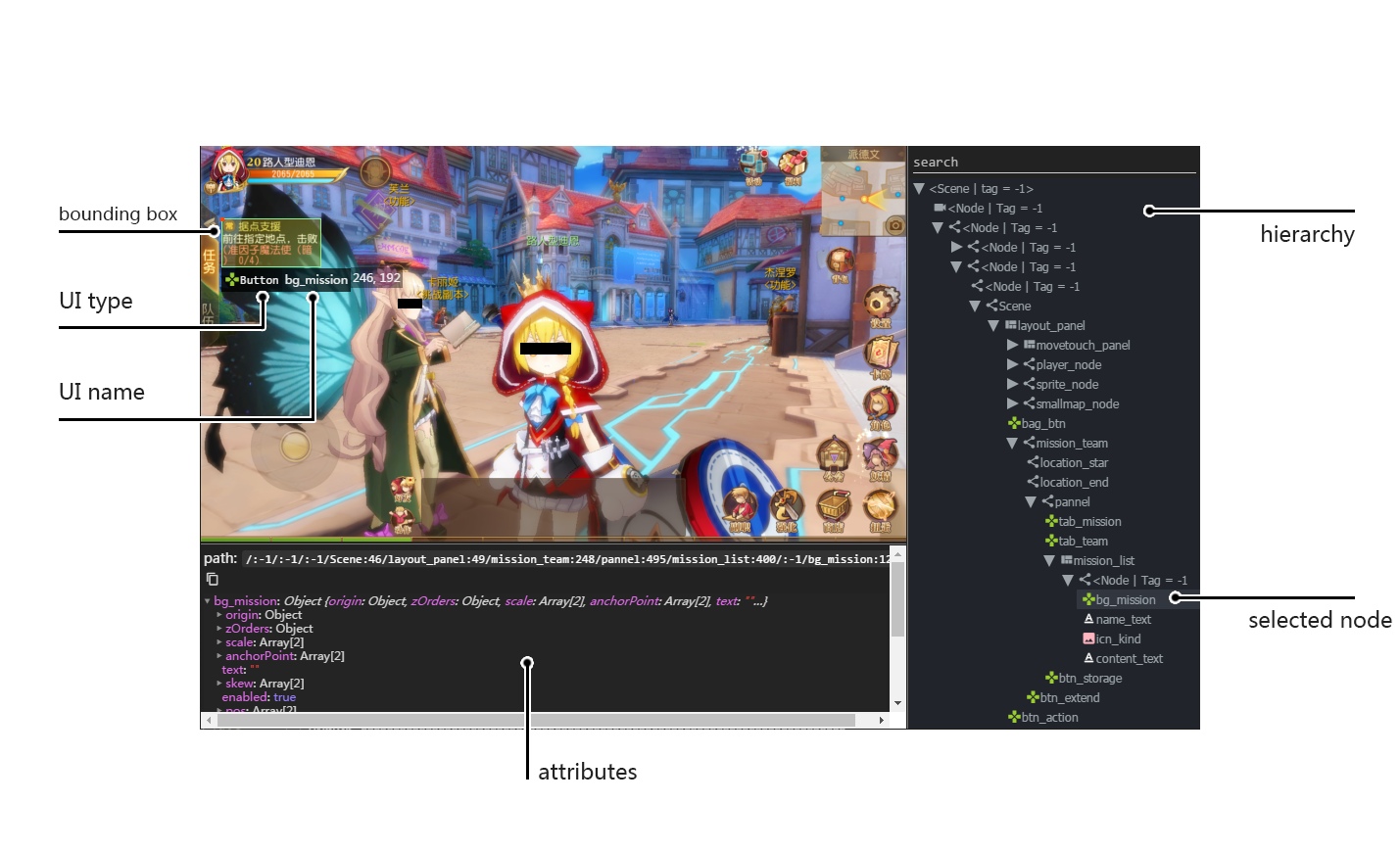Welcome to Poco (ポコ) documentation!
A cross-engine UI automation framework. Unity3D/cocos2dx-*/Android native APP/iOS native APP/(Other engines SDK)/…
Getting Started
Install Poco and PocoSDK
In order to use Poco, you must install Poco python library on your host and also install the poco-sdk in your game/app.
Poco can be installed straightforward with pip command
pip install pocoui
For poco-sdk integration please refer to Integration Guide
Using Poco as Python package
Simple demo
The following example shows a simple script on demo game using Unity3D. Check More examples section for more detailed info.
First you should connect your Android phone, for example, via usb cable and enable the ADB DEBUG MODE.

# coding=utf-8
import time
from poco.drivers.unity3d import UnityPoco
poco = UnityPoco()
poco('btn_start').click()
time.sleep(1.5)
shell = poco('shell').focus('center')
for star in poco('star'):
star.drag_to(shell)
time.sleep(1)
assert poco('scoreVal').get_text() == "100", "score correct."
poco('btn_back', type='Button').click()
Tools for writing test scripts
To retrieve the UI hierarchy of the game, please use our AirtestIDE (an IDE for writing test scripts) or standalone PocoHierarchyViewer (to viewer the hierarchy and attributes only but lightweight) !

Use poco on platforms/engines
This section guide you how to start to use poco to write your test cases on different platforms/engines.
Tutorials and examples
This section will let your know all basic features of poco.
API reference
Poco API
You can find all functions/methods for writing test scripts under the following links.
Engine specific API
Poco SDK API
Dump UI hierarchy example
Poco defines an uniform format to serialize UI hierarchy for different game engines. This section shows how to dump UI hierarchy.
import json
from poco.drivers.unity3d import UnityPoco as Poco
poco = Poco()
ui = poco.dump() # equivalent to poco.agent.hierarchy.dump()
print(json.dumps(ui, indent=4))
The following is the snippet of UI hierarchy. All UI elements are organized in dict representing the tree structure. More detailed info about properties are described in .dumpHierarchy().
...
{
"name": "OctopusArea",
"payload": {
"name": "OctopusArea",
"type": "GameObject",
"visible": true,
"clickable": true,
"zOrders": {
"global": 0,
"local": -10
},
"scale": [
1,
1
],
"anchorPoint": [
0.5,
0.5
],
"pos": [
0.130729169,
0.44907406
],
"size": [
0.0859375,
0.125
]
}
"children": [
{...},
...
],
}
...